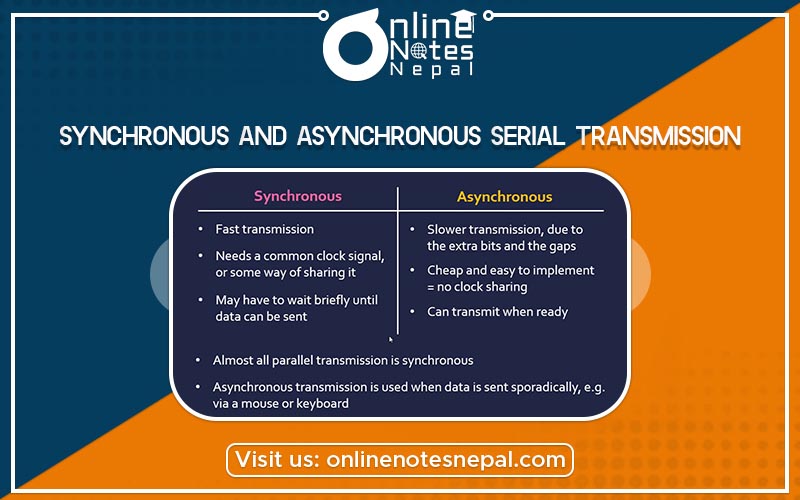Published by: Nuru
Published date: 17 Jun 2021

For Synchronous and Asynchronous Serial Transmission, As we know Serial Transmission data is sent bit by bit, in such a way that each bit follows another. It is of two types namely, Synchronous and Asynchronous Transmission.
Synchronous Transmission
In synchronous transmission, data moves in a completely paired approach, in the form of chunks or frames. Synchronization between the source and target is required so that the source knows where the new byte begins since there are no spaces included between the data.
Synchronous transmission is effective, dependable, and often utilized for transmitting a large amount of data. It offers real-time communication between linked devices. An example of synchronous transmission would be the transfer of a large text file. Before the file is transmitted, it is first dissected into blocks of sentences. The blocks are then transferred over the communication link to the target location.
Characteristics of Synchronous Transmission
Examples of Synchronous Transmission
Asynchronous Transmission
In asynchronous transmission, data moves in a half-paired approach, 1 byte or 1 character at a time. It sends the data in a constant current of bytes. The size of a character transmitted is 8 bits, with a parity bit added both at the beginning and at the end, making it a total of 10 bits. It doesn’t need a clock for integration—rather, it utilizes the parity bits to tell the receiver how to translate the data. It is straightforward, quick, cost-effective, and doesn’t need 2-way communication to function.
Characteristics of Asynchronous Transmission
Each character is headed by a beginning bit and concluded with one or more end bits.
There may be gaps or spaces in between characters.
Examples of Asynchronous Transmission